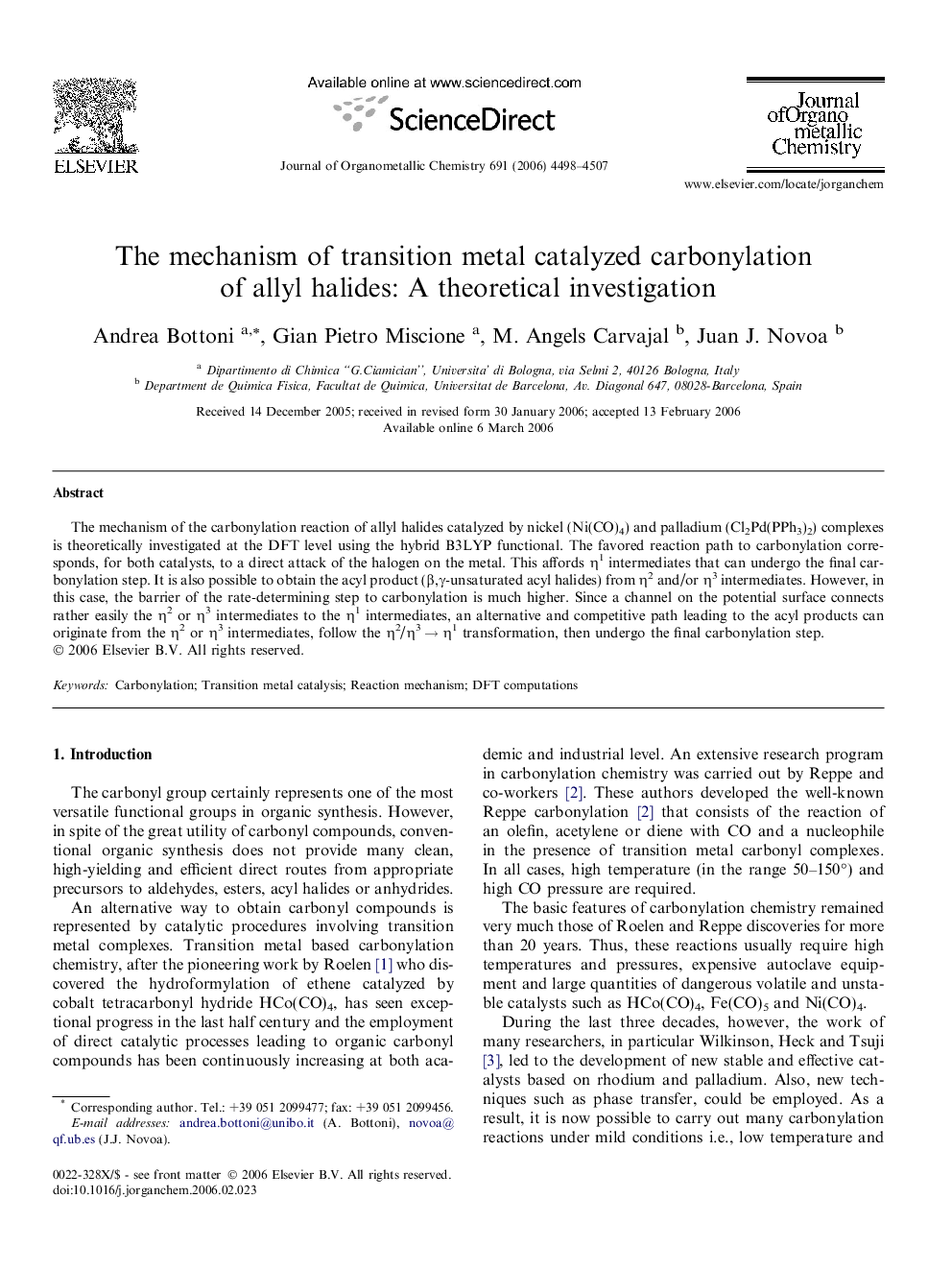| کد مقاله | کد نشریه | سال انتشار | مقاله انگلیسی | نسخه تمام متن |
|---|---|---|---|---|
| 1325606 | 977391 | 2006 | 10 صفحه PDF | دانلود رایگان |

The mechanism of the carbonylation reaction of allyl halides catalyzed by nickel (Ni(CO)4) and palladium (Cl2Pd(PPh3)2) complexes is theoretically investigated at the DFT level using the hybrid B3LYP functional. The favored reaction path to carbonylation corresponds, for both catalysts, to a direct attack of the halogen on the metal. This affords η1 intermediates that can undergo the final carbonylation step. It is also possible to obtain the acyl product (β,γ-unsaturated acyl halides) from η2 and/or η3 intermediates. However, in this case, the barrier of the rate-determining step to carbonylation is much higher. Since a channel on the potential surface connects rather easily the η2 or η3 intermediates to the η1 intermediates, an alternative and competitive path leading to the acyl products can originate from the η2 or η3 intermediates, follow the η2/η3 → η1 transformation, then undergo the final carbonylation step.
The computational study of the carbonylation of allyl substrates catalyzed by nickel and palladium, shows interesting mechanistic features. In particular, irrespective of the metal used in the catalysis, the favored path is very similar in the two cases (i.e., a direct attack of the halogen on the metal).Figure optionsDownload as PowerPoint slide
Journal: Journal of Organometallic Chemistry - Volume 691, Issue 21, 15 October 2006, Pages 4498–4507